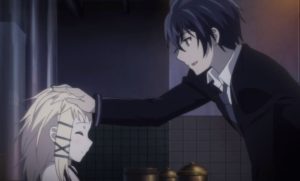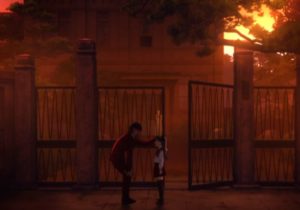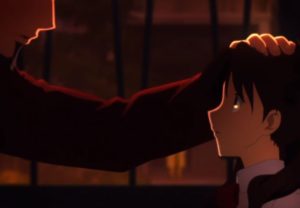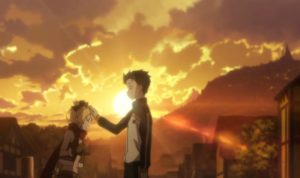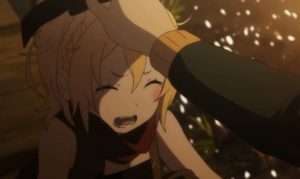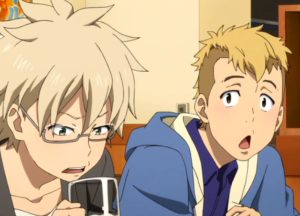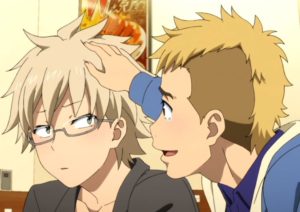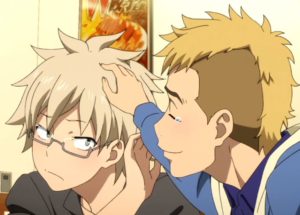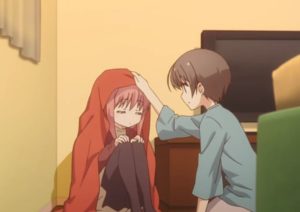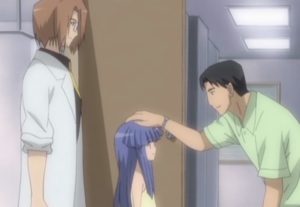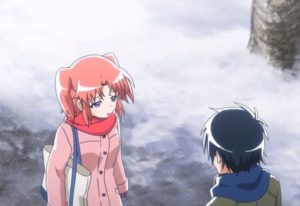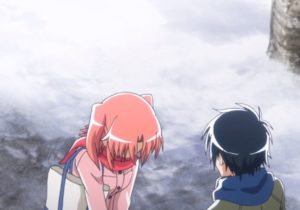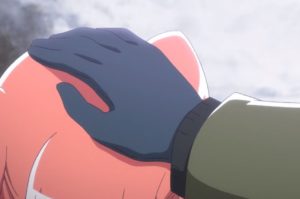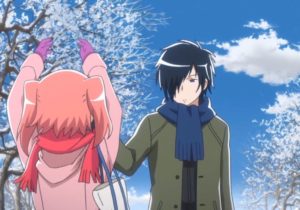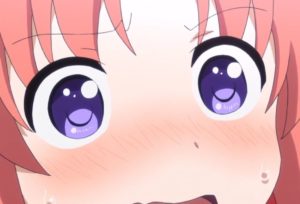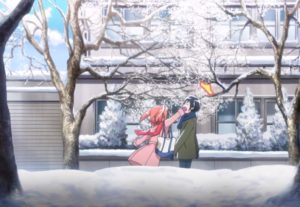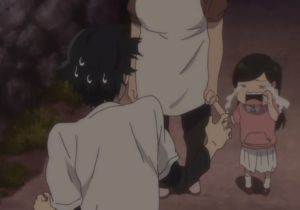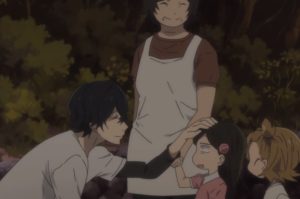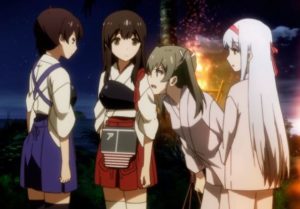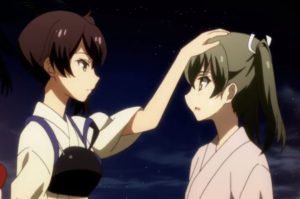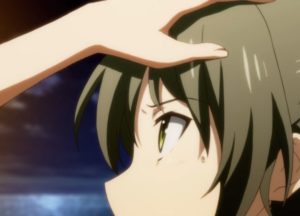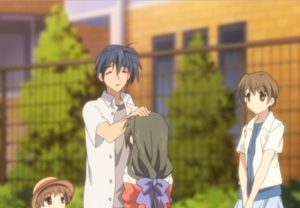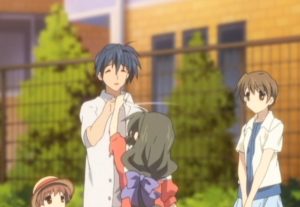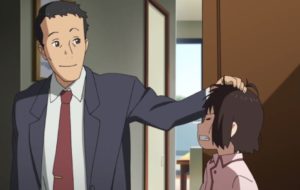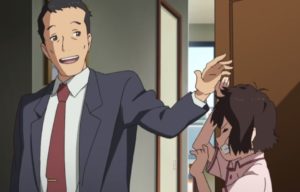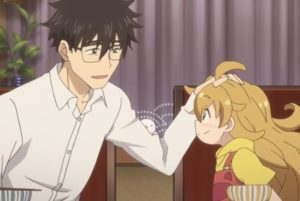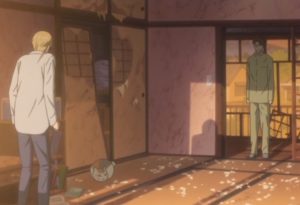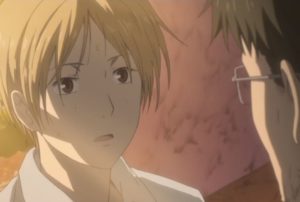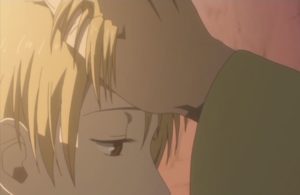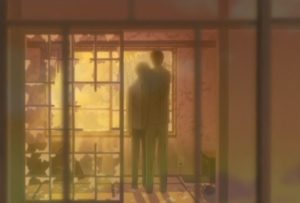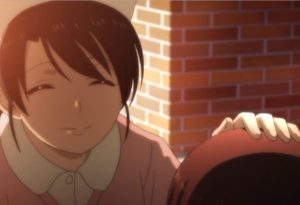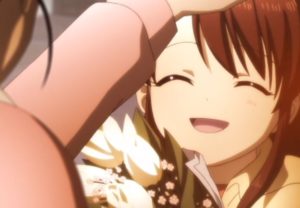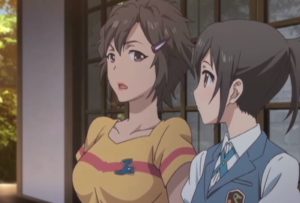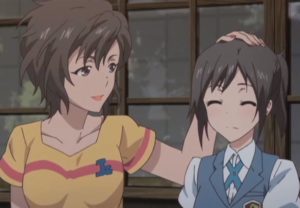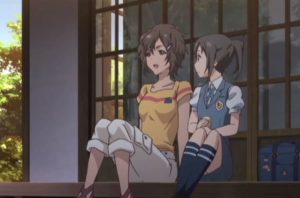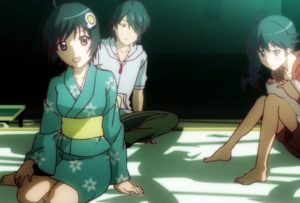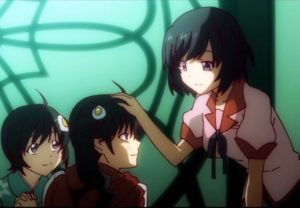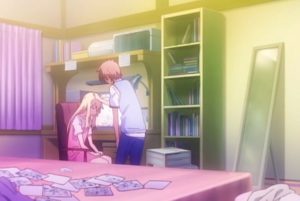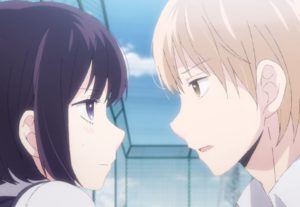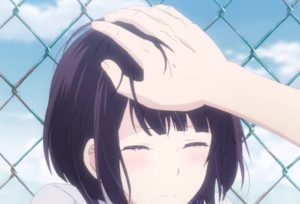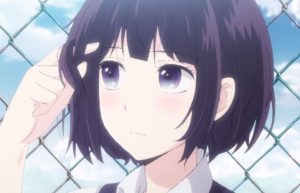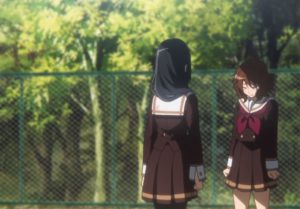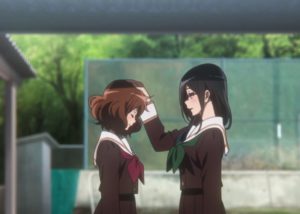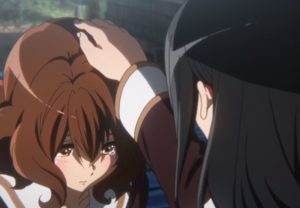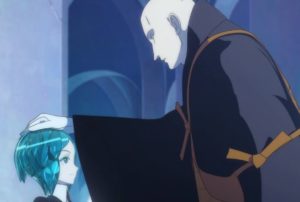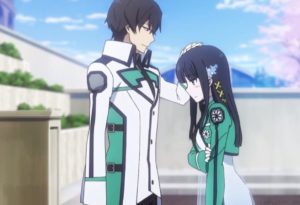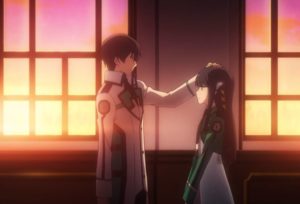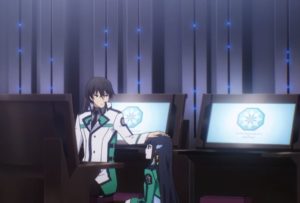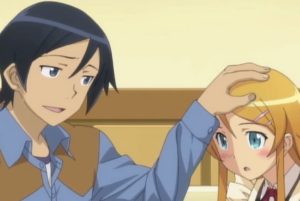Why does the Japanese people pat someone’s head?
Why does the Japanese pat someone’s head?
Introduction
When you praise a child, you will hug and kiss the forehead of the child. When Japanese praise a child, they will pat their child’s head. Characters pat other character’s head even in animation and manga. However, there are many misunderstandings abroad about this Japanese action. Do you know the true meaning and psychological implications when Japanese people are patting the heads of others? At least you will have a lot of questions and interests about the acts of Japanese caressing your head.
Therefore, in this article, while explaining the history of Japan, I will explain the concrete situation about the action of patting one’s head in detail. If you read this article, all your question about this Japanese communication will be resolved. And you will be able to fully understand the meaning of the scene where Japanese pats someone’ head.
©2013 神崎紫電/KADOKAWA アスキー・メディアワークス刊/ブラック・ブレット製作委員会
If you look at Tina Sprout (left girl) and Rentarou Satomi (right boy) in this image from “Black Bullet”, you can see that they already have built trust between themselves, although they were hostile towards each other in the past. Even though Tina is a child, she would behave unpleasantly or would even refuse to interact with Rentarou if she didn’t trust him.
1. General interpretation of patting one’s head
1.1. The act of patting the head of a child
Japanese children feel pleasant when an adult pats their heads. Because they understand that the act of patting his head means praising them. This is similar to the act of a parent kissing a child’s forehead in the West, which is one of the essential communication for a child’s growth. There is no problem with parents, teachers, or friends of parents patting children’s heads, but strangers will not do it. The adults need a certain trusting relationship with the children to pat their head.
©Nitroplus/TYPE-MOON・ufotable・FZPC
These images from “Fate/Zero” are a scene where Tokiomi Tousaka pats his daughter’s head. This communication is very important for father and daughter because this is the last one for them. Oh, No…
1.2. The act of patting the head with adults
In adult combinations, when one adult pats the head of the other adult, the older often pats the head of a younger. Therefore, the act of patting the head of an adult is not necessarily in the direction of male to female. Rather, in Japan, age tends to be prioritized over gender. Older people tend to pat the head of younger people.
And, when an adult pats the head of other adults, a certain trust relationship is necessary for both. This is very important. Even if you are older, you can not always pat the head of another when there is not a certain trusting relationship between the two.
©高津カリノ/スクウェアエニックス・サーバント×サービス製作委員会
This image from “Servant × Service” is a scene where Ichimiya Taishi (right man) pats the head of his coworker Megumi Chihaya (left woman) to comfort her.
In addition, some overseas articles report that Japanese women feel pleasant when their heads are patted. But this is a misleading article. There are also many Japanese women who do not like being patted at their heads, and many Japanese women judge likes and dislikes according to circumstances. On the contrary, you can assume the relationship between the two adults and the degree of trust by seeing the act of stroking the head. This act is fun to know the sensitivity of Japanese people.
1.3. “patting” acts abroad
In some countries such as Thailand, India, Nepal, Indonesia, it is said that God lives on the head. Therefore, not only the act of patting a person’s head but also placing a hand on the head and touching one’s head are taboo. This seems to be related to Buddhist teachings and regional characteristics. However, even though Japan is a Buddhist country, there is a habit of touching the head. This supports the fact that the act of stroking the head was done before Buddhism entered Japan.
©長月達平・株式会社KADOKAWA刊/Re:ゼロから始める異世界生活製作委員会
These images are from “Re:Zero − Starting Life in Another World”. Probably, as same as in another world, the act is not common.
1.4. Japanese Historical Documents
“万葉集” (まんようしゅう, Manyoushu) is the oldest existing collection of Japanese poetry. It was woven from the late 7th century to the late 8th century. Among them, in the “防人の歌” (さきもりのうた, Sakimori no Uta, songs of the guards), there is a song “I can not forget that my parents patted my head and they wished me well”. Therefore, there was already a custom of patting a person’s head at this time.
2. Meaning and Mentality
2.1. Meaning of patting one’s head
· To comfort or cheer up
We pat someone’s head to comfort them when they are depressed. In order to pat on the head, mutual trust relationships are important regardless of the sex. Since the other person is depressed, it is unnecessary to have a really strong relationship of trust established. We just need a certain trust relationship.
©「SHIROBAKO」製作委員会
These images from “Shirobako” are a scene where Tarou Takanashi (right) comforts his coworker Daisuke Hiraoka (left) who is telling his worries to Tarou. Tarou’s work is not up to much but he is likable.
· To reassure
The act of patting the head is also carried out to reassure the partner who feels uneasy. In this case, a stronger relationship of trust is required than when you try to comfort someone. Because the other person needs to reveal their anxiety to you.
©篤見唯子・芳文社/スロウスタート制作委員会
This image from “Slow Start” is a scene where the mother reassures her daughter who failed the high school entrance exam. In reality, if Japanese junior high school student fails the same, they would be very very disappointed!!
· To praise
When patting the head to praise someone, that action is not only for elementary school students but also for junior high and high school students. Older people will pat their heads. The person who gets patted on his/her head has got a good result worthy of being praised and they are also excited. Therefore, this action is established with a certain trust relationship. However, it is unusual for this action to be carried out between people at the same age.
(C)2007竜騎士07/雛見沢御三家
This image from “When They Cry: Kai” is a scene where Rika Furude is praised because she did her best withstanding the pain of injection. As you may know, she endures more and more stronger pain.
· No particular meaning
With no special meaning, the act of patting the head is sometimes carried out for reasons such as children are cute. Parents and teachers often pat on the head of small children for this reason. However, do not forget that they have the deep affection for the children. Otherwise, they don’t pat children’s head without special meaning.
(C)荒井チェリー/一迅社・未確認で進行形製作委員会
These images from “Engaged to the Unidentified” are a scene where Hakuya Mitsumine (boy) pats the head of Kobeni Yonomori (girl) and gets her counterpunch. If someone has not a good relationship to one and pats the head with no particular meaning, he would get the same result.
· There, there
This is the pattern that we say “There, there” and pat the head of small children or crying children. However, this pattern is established until the lower grades of the elementary school students. When a child grows and this pattern does not hold, parents feel somewhat sad, but at the same time they feel joy in the growth of their children. Is there such a milestone in your country?
(c)ヨシノサツキ/スクウェアエニックス・「ばらかもん」製作委員会
These images from “Barakamon” are a scene where the main character Seisyuu Handa pats the head of the girls crying to look at him.
2.2. Mentality of the Person who pats the head
Although it may seem easy to pat someone’s head, actually doing it is not simple. The person who pats the partner’s head needs to be confident that he/she is in a good relationship of trust with the other person. If rejected, the person who wanted to pat will receive big psychological damage. Therefore, it is very important not to jump into the act of patting someone’s head, but to figure out how much trust you can build with the other person.
©2016 「劇場版 艦これ」連合艦隊司令部
For example, these images are a scene from “Kantai Collection” where Kaga pats Zuikaku’s head with the intention of praising her. Given that they are quarreling due to differences in opinion, you can read that this act includes the meaning of not only “praise” but also “reconciliation”. Kaga sorts out her feelings and tries to improve the relationship with Zuikaku.
2.3. Mentality of the Person who is patted on the head
When someone accepts the act of being patted on his/her head, you can understand that there is a certain relationship of trust between the two. On the other hand, there are two patterns when rejecting the act of being patted on the head, there is a case where there is no trust relationship between them and a case where there is a relationship of trust.
(C)VisualArt’s/Key/光坂高校演劇部
These images from “Clannad After Story” are a scene where Ibuki Fuuko (girl) rejects the patting by Tomoya Okazaki (boy) because she doesn’t know him well (But he knows her very well).
In the former case, it is simple. The side who is patted on his/her head does not trust the other. In the latter case, it is complicated, there are emotional differences between the side being patted on the head and the other side patting. There are various reasons for rejection, such as rebellious period, pride, shyness from romantic feelings.
↓
©東京マグニチュード8.0製作委員会
However, in the rebellious period, he/she will refuse to be stroked their head by the parent like this image from “Tokyo Magnitude 8.0”. They insist that “I am not a child.” But for parents, a child is a child. Parents stroke their child’s head, thinking “You are a good girl, try hard to study.” It is a scenery of everyday life that is often seen in Japan.
3. The Direction of the Act of Patting the Head
3.1. From Parents to Children in Elementary School
The purpose of parents caressing the heads of elementary school children is to praise or to reassure. Also, parents often pat them on the heads simply because “My children are just adorable.” The act of patting the head is also one way to show love to children.
© 雨隠ギド・講談社/「甘々と稲妻」製作委員会
This image from “Sweetness and Lightning” is a scene where Kouhei Inuzuka and her daughter Tsumugi enjoy dinner. In Japan, such a scene is not rare especially during children are an elementary school student.
When the child is at a lower grade of elementary school, there is no problem in parents patting the head of the child. However, the situation will be slightly different when the child is at a higher grade of elementary school. He/she starts to feel embarrassed to be patted his /her head.
3.2. From Parents to Children in Junior High School or High School
Children in junior high school or high school will dislike being patted on their head by their parents or grandparents. Therefore, if children of that age are accepting that their heads are patted, you understand that the relationship between their parents and children is very good. Because it can be presumed that children prioritize the respect for their parents rather than rebellious feelings.
©緑川ゆき・白泉社/「夏目友人帳」製作委員会
These images from “Zoku Natsume Yujin-cho” are the very important scene. Takashi Natsume (left boy) broke his room and is ready to get in trouble by Shigeru Fujiwara (right man). Fujiwara doesn’t warn and lecture him but understand his situation. As you might already know, they are not father and child. However, this scene tells you the important fact that they have an excellent relationship.
3.3. From Adults to Children in Elementary School
This pattern often has no special meaning for the actor. They pat the head of the child simply with the implication of “You are a good boy/girl.” or “You are doing your best.” Children tend to receive this favorably. However, it’s not the case if elementary school students do not like adults patting their heads.
(C)VisualArt’s/Key/Angel Beats! Project
These images from “Angel Beats!” are a scene where a girl left the hospital and the nurse sends the message “You are a good girl”.
There is a rare case where strangers gently pat the child’s head. For example, when a child bumped into a stranger on the road and s/he apologizes, the person may caress the child’s head as “you are a good boy/girl.”. Outside of such a case, the adult strangers will not pat children on their head.
3.4. From Adults to Children in Junior High School or High School
This pattern is established when adults and children in junior high and high school are in a great teacher-student relationship, or they have special relationships of trust. As mentioned above, the meaning of patting one’s head varies depending on the situation, but mostly it means to praise that “you have worked hard.” However, some junior high and high school students may interpret this as sexual harassment, so you need to be careful to do this. They are going through a difficult stage.
©tari tari project
These images from “Tari Tari” are a scene where Shiho Okita (left woman) is willing to listen to Wakana Sakai (right girl) about her songs. She goes to the music school and aims to finish her mother’s song (Unfortunately, her mother is already dead). So Sakai asks Okita who was a junior to Sakai’s mother in school days.
3.5. From High School Student to Junior High School Student
Even if junior high school students have respect for high school students, they don’t really pat each other’s head. That is because the age of junior high school students is difficult. Also, since their age difference is not large, if junior high school students do not like high school students, junior high school students will not feel happy even if their heads are patted. Therefore, when this action is established, you can understand that there is a sufficient trust relationship between them.
©西尾維新/講談社・アニプレックス・シャフト
These images from “Fake Story” are a scene where Tsubasa Hanekawa (right girl) reassures fire sisters (Oops! Araragi sisters). The sisters like Tsubasa better than their brother Koyomi? Umm, I don’t think so but how do you think?
3.6. Same Age
This pattern occurs when one takes care of the other or when one protects the other. This pattern is often executed not to praise the other person but to give a sense of security.
(C)鴨志田一/アスキー・メディアワークス/さくら荘製作委員会
This image from “The Pet Girl of Sakurasou” is a scene where Sorata Kanda (right boy) comforts and cheers up Mashiro Shiina. In reality, this case is very rare but it is possible to be the case in which two-person has a strong relationship like them (they are not dating).
3.7. Couple
In this pattern, the actor who pats the head is determined by not the age but the relationship between the two. Even between an older man and a younger woman, if she is dependable and has strong maternal instincts, she would pat him on the head. This means that the mental age is important rather than an actual age.
The act of patting the head is one of the ways to express favor to the partner. However, as they become older they will not do it. There are also people who recognize that patting head is a particularly good thing to make someone fall in love with them. The reason is that they were pleasantly happy as their parents patted their head when they were children.
However, you should be careful that there are women and men who don’t want to be patted on their heads even by their lover. The act of patting the head has another meaning to restrain the other person’s head and restrict movements.
(c)横槍メンゴ/SQUARE ENIX・「クズの本懐」製作委員会
These images from “Scum’s Wish” are a scene where Mugi Awaya (right boy) pats the head of Hanabi Yasuraoka with no particular meaning (maybe). What !? They are not dating?? Oh… you are right. They keep a fake love relationship for a purpose. Yes.
3.8. From Senior to Junior (From Boss to Subordinate)
Not only students but also employees can pat the head of someone, but you wouldn’t see it in the real workplace because the other person may interpret it as sexual or power harassment. However, if there is a certain relationship of trust between the two, the act of patting the head could be sufficiently established. It is not necessarily a fictional act. For example, when a subordinate is depressed in his works, his/her senior may caress the head for comfort.
©武田綾乃・宝島社/『響け!』製作委員会
These images from “Sound! Euphonium 2” are one of the most famous scenes. The senior Asuka Tanaka (blue hair) comforts her junior Kumiko Oumae (brown hair) by patting her head. However, at the same time when Asuka comforts Kumiko, Asuka is comforted by Kumiko.
3.9. From Teachers to Students
The act of patting the head is established not only in the relation of teacher and student but also in the relation of master and disciple. However, for it to be established, a mutual trust relationship is still required. If the students are junior high or high school students, the difference in height between the students and the teacher will be small, and the students are in difficult age, so the teacher will not pat the students’ head. However, if both the teacher and the student are female and touchy, or if they have a strong relationship of trust, this action is established even if they are junior high or high school students.
© 2017 市川春子・講談社/「宝石の国」製作委員会
This image from “Land of the Lustrous” is a scene where the master reassures his disciple Phosphophyllite. What !? Why is the head shining? The reason is that is the jewel. Phosphophyllite is a kind of jewels.
3.10. Brother and sister (junior high and high school student)
I’m sure you have often watched the scenes in anime and manga where an older brother pats his sister’s head. However, in reality, in order to do this action, a mutual trust is necessary for the relationship between the two. It will be easily established if their age difference is over 5 years old, but it will be difficult in reality if the difference is only about 2-3 years. Especially, in the case that they are junior high or high school students, this tendency will be particularly strong because they are the both in the tough years.
© 2013 佐島 勤/KADOKAWA アスキー・メディアワークス刊/魔法科高校製作委員会
These images are from “The Irregular at Magic High School”.
In such trends, you would be surprised by a work that depicts love and romance between brother and sister like “Yosuga no Sora”, “Nakaimo – My Sister Is Among Them!” and “Pupa”. Also, you will be surprised by a lot of works depicting brother/sisterhood like “Oreimo”, “The Irregular at Magic High School” and “Eromanga Sensei”.
(C)伏見つかさ/アスキー・メディアワークス/OIP
This image is from “Oreimo”.
On the other hand, there also are many works that deal with brother/sisterhood from the aspect of a family more like “Grave of the Fireflies”, “Code Geass” and “Tokyo Magnitude 8.0”. “Mirai of the Future” scheduled to be released in the summer of 2018 is also the story of brother and sister. Please think about the meaning of the scenes patting the head within each work.
Conclusion
The custom of Japanese people patting the heads has existed quite a long time ago. It is a very common practice to pat the child’s head when an adult praises a child. Not only men pat the women’s head but also women pat men’s head. Also, there is a case from women to women. You have understood such the act of patting the head is one of the depending actions or physical affection for other people.
In addition, you understood in this article that not all Japanese like patting or being patted on the head. There are a lot of scenes in anime and manga where people pat partner’s head since the act of patting the head is one of the affection expressions. When you read this article, you will be able to infer his/her heart and the two person’s extent of trust relationship from the act of patting the head.
